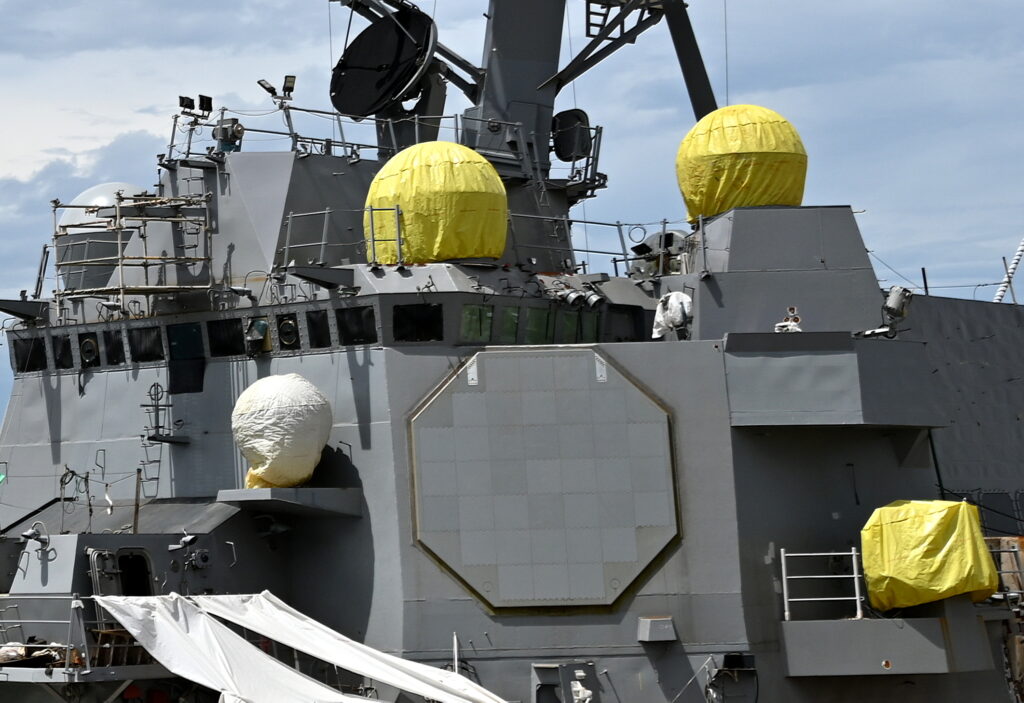
************
ARLINGTON, Va. — The U.S. Navy’s new SPY-6(V)1 Air and Missile Defense Radar is scheduled to reach Initial Operational Capability (IOC) during the fourth quarter of fiscal 2024, a Raytheon official said.
The radar, which first went to sea for trials on Flight III Arleigh Burke-class guided-missile destroyer Jack H. Lucas (DDG 125) in December, met all of its test objectives, said Mike Mills, Raytheon’s senior director for Naval Radar Programs in a Jan. 6 interview with Seapower, noting that the radar will be ready for IOC late next year.
New Year, New Radar
The fixed-face SPY-6(V)1 replacing the SPY-1 in the newest version of the Arleigh Burke class DDG, Flight III.
Mills said more software enhancements to the radar will be made as it is readied for the Navy’s acceptance trials scheduled for May or June.
Raytheon is under contract for 25 SPY-6 radars of the various versions, including six SPY-6(V)1 variants for DDGs. The future USS Ted Stevens (DDG 128) will be the second ship DDG to be fitted with the SPY-6(V)1.
The SPY-6(V)2 Enterprise Air Search Radar (EASR) is a rotating antenna version that is first being installed on the Flight I San Antonio-class amphibious platform dock ship Richard M. McCool Jr., the transition ship to the Flight II of the class.
The first SPY-6(V)3 EASR rotating radar has been installed on the future aircraft carrier USS John F. Kennedy (CVN 79), currently under construction.
The SPY-6(V)4 version has a fixed-face antenna and will be retrofitted on some Flight IIA DDGs in place of the SPY-1. Mills said an adapter plate will be installed on the ships to allow for the retrofit of the SPY-6(V)4 antennas. The existing power systems will be 95% leveraged for re-use, he said.
Mills said he expects a contract for the (V)4 to be forthcoming this year.
He said the commonality of the various SPY-6 variants will simplify logistics. They will have common software and common sensor cells.
Superior Defense Capabilities
All DDGs equipped with the SPY-6 will have defense capability against ballistic missiles, Mills said.
He also pointed out that the increased range of the SPY-6 will improve the defensive capability of a DDG and free up more missile launchers for offensive capability.
“We’ve got a whole lot of international interest,” Mills said, noting that several nations that currently use the SPY-1 radars would be potential customers for the SPY-6(V)1. He said his company has given numerous briefings to potential international customers.






